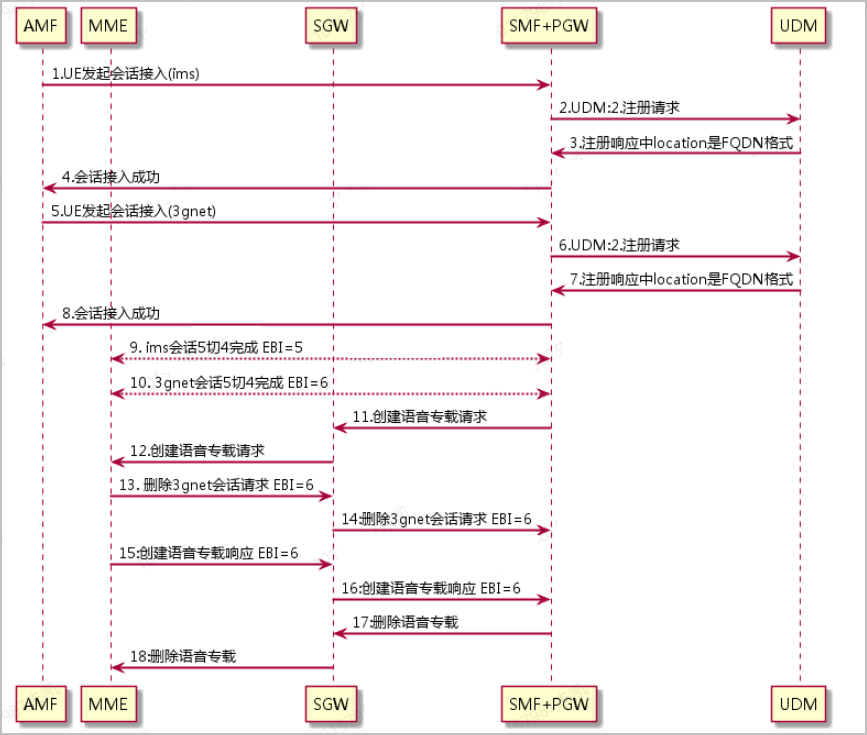Solving the problem of occasional voice call failure for 5GC users

Solving the problem of occasional voice call failure for 5GC users
 picture
picture
An operator has activated 5GC services and address segmentation functions. After IP address segmentation was enabled, users in prefectures and cities reported that there were failures in making calls.
 picture
picture
1. Sort out the signaling process, as shown in Figure 1.
a.SMF deleted the voice dedicated service due to EBI conflict.
b. The EBI conflict is because after the MME sends the request to delete the data session, it allocates the EBI of the data session to the voice bearer, and at this time, the SMF deletes the data session.
c. The SMF deletion data session has not ended because the location of the UDM registration response in step 7 is in FQDN format, which makes the SMF deletion session process longer.
d. The SMF deletion session process takes longer because when sending a registration message to UDM, the FQDN needs to be parsed first.
 Figure 1 Signaling flow chart
Figure 1 Signaling flow chart
2. The interval between MME sending DELETE SESSION REQUEST and CRT BEARER RESPONSE is very short. From a signaling point of view, the DELETE SESSION REQUEST and CRT BEARER RESPONSE received by SMF are only 240 milliseconds apart, as shown in Figure 2.
 Figure 2 SMF message reception interval
Figure 2 SMF message reception interval
3. The location returned by UDM at other sites is in IP address format, and the SMF release session takes about 20 milliseconds. Taking Figure 3 as an example, from the signaling point of view, it only takes 10 milliseconds to release the session.
 Figure 3 release session time
Figure 3 release session time
4. To sum up the above analysis: SMF proactively deletes the special content because the EBI conflict causes the process of creating the special content to fail. This is mainly because the location content carried in the UDM registration response of the user creation session is in the FQDN format. When deleting a session, SMF needs to notify UDM to register. When processing the FQDN resolution, the time for SMF to process the delete session process is increased, and the old session cannot be deleted in time, which greatly increases the probability of EBI conflicts in the Create Bearer process.
 picture
picture
1.UDM carries the location content in the registration response to SMF in the format of an IP address.
2. SMF optimizes FQDN resolution processing, which can shorten the processing delay and avoid EBI conflict scenarios. This optimization will be incorporated into the next FOA version.